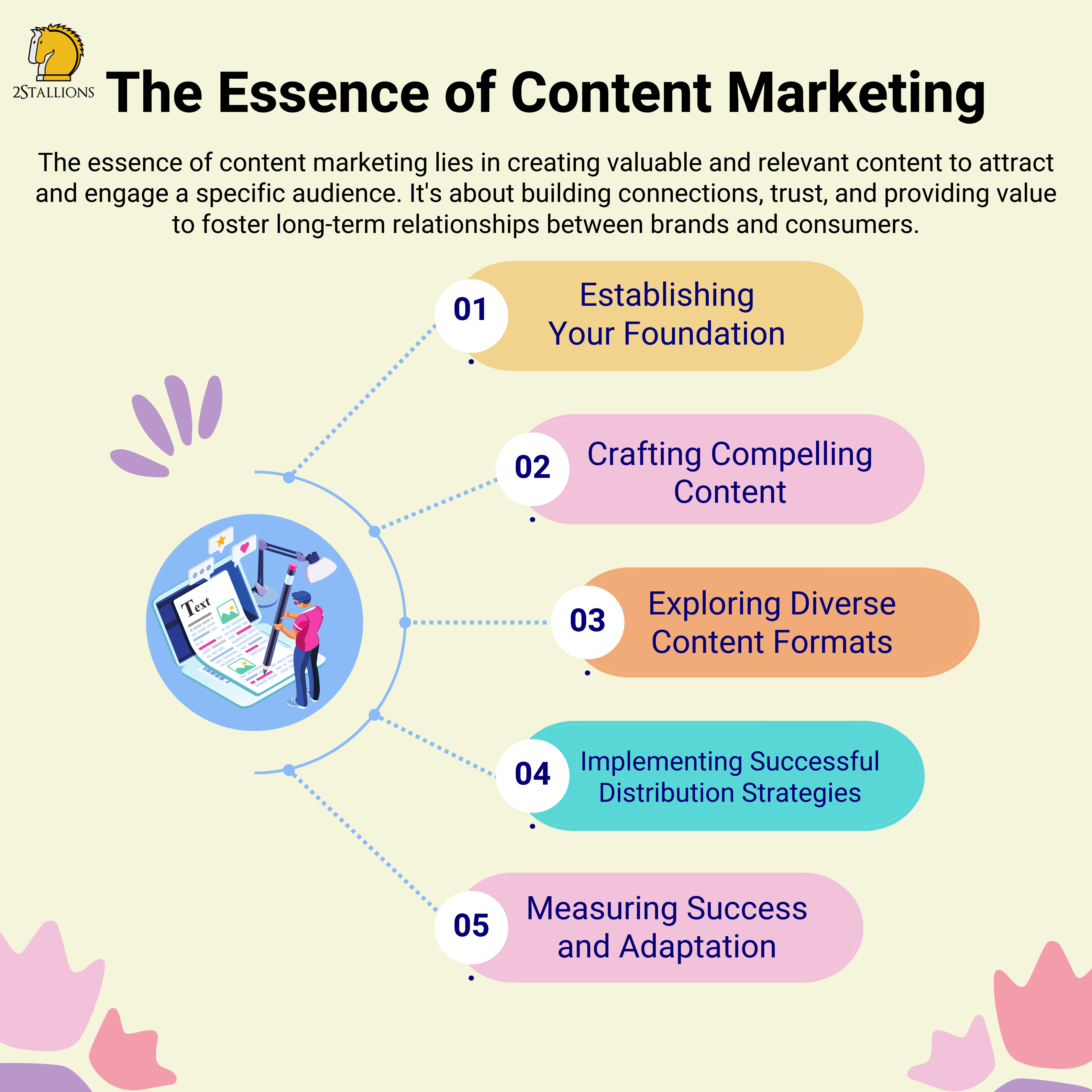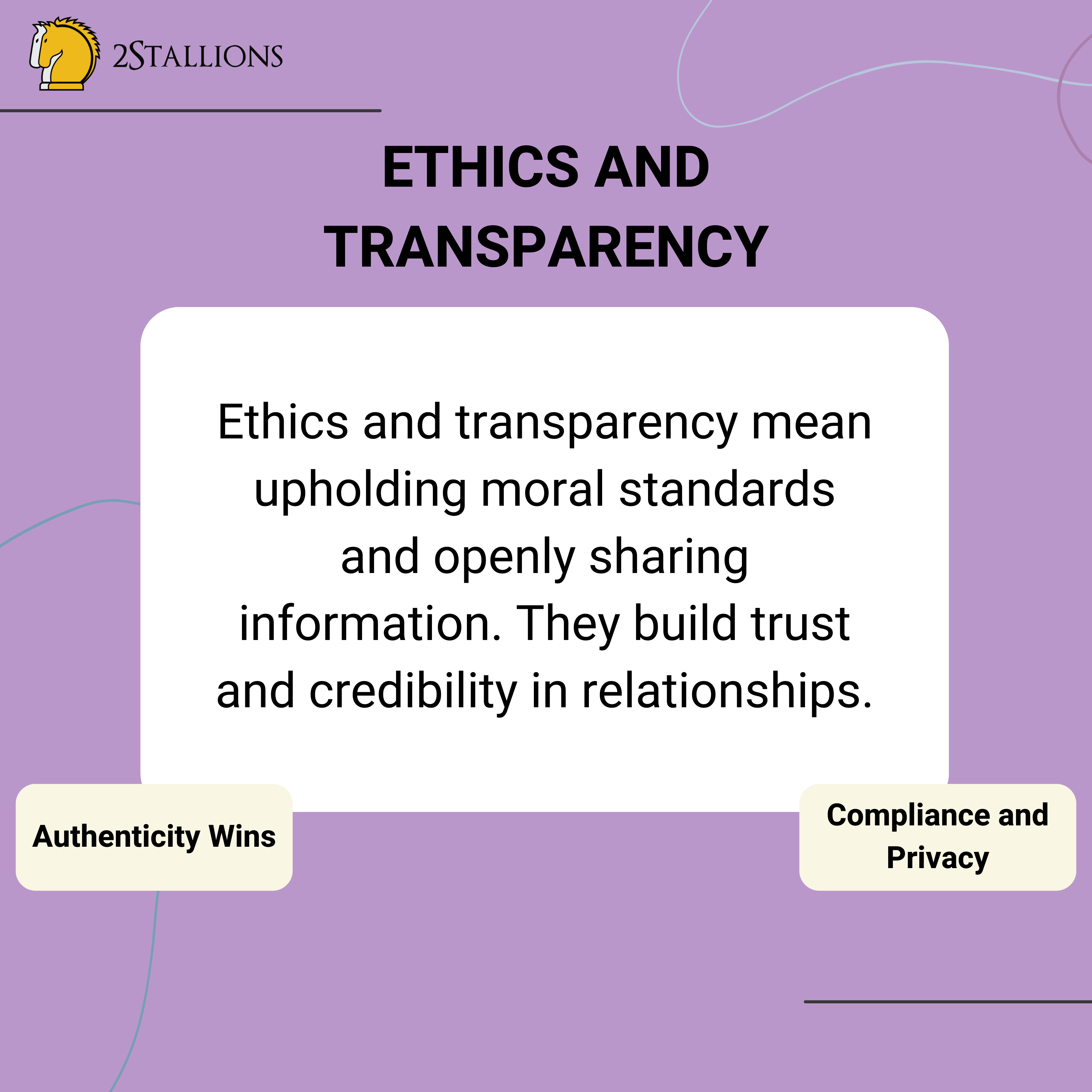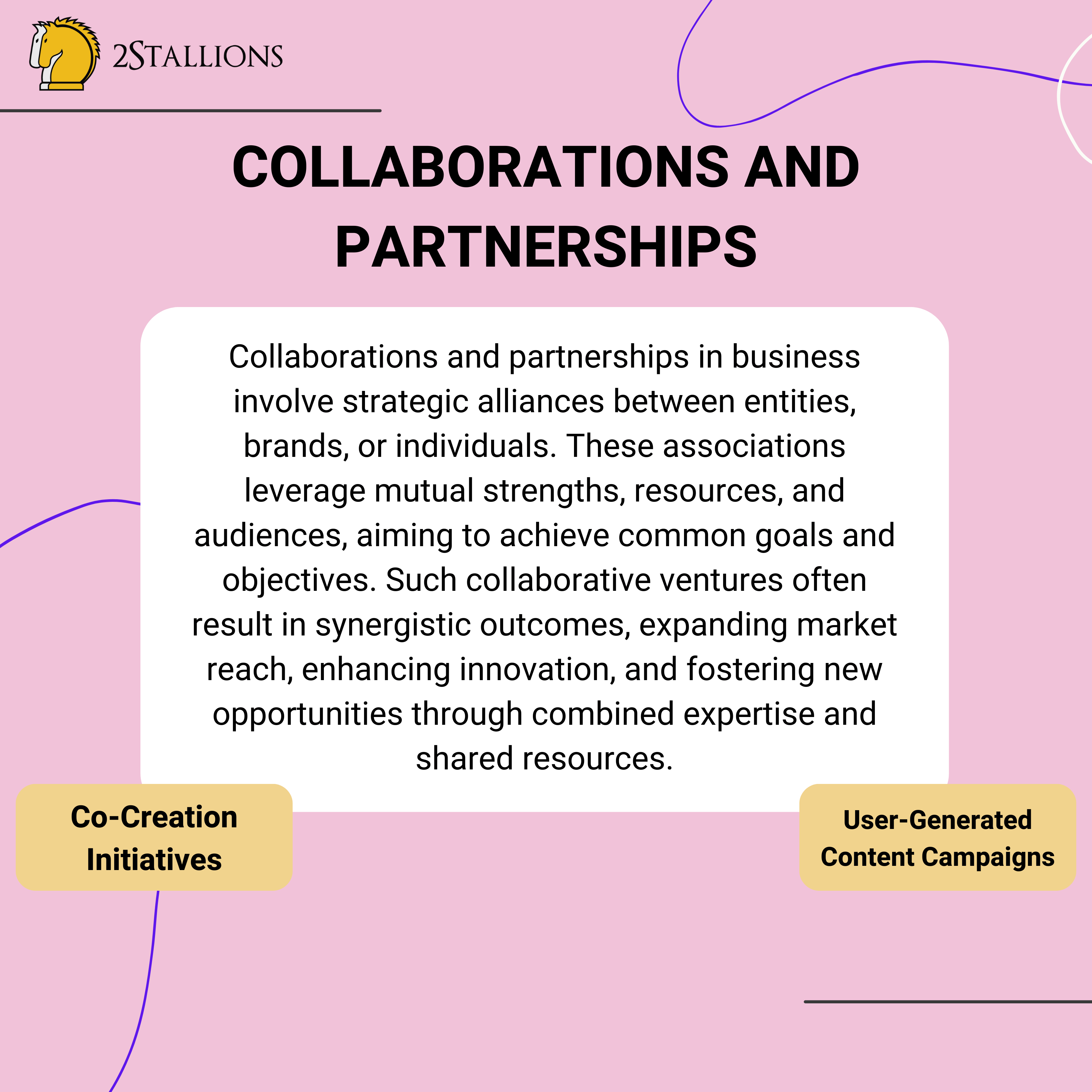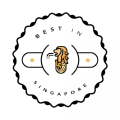SHARE

The quest to engage consumers has become the cornerstone for any brand, particularly those aiming for the status of a ‘famous brand.’ So, which strategy best helps a famous brand company reach consumers? The answer lies in the crux of content marketing.
[thrive_leads id=’8342′]
Content marketing stands tall as the cornerstone of modern advertising and brand development. It isn’t merely about pushing products but weaving narratives that resonate deeply. Understanding why it’s important as a consumer to recognise and understand marketing techniques and strategies is critical to comprehending the power dynamic between brands and their audiences.
Understanding the Essence of Content Marketing
Content marketing isn’t solely about selling products; it’s about building relationships, fostering trust, and adding value to your audience’s lives. It’s a strategic approach that involves creating and distributing valuable, relevant, and consistent content to attract and retain a clearly defined audience.
-
Establishing Your Foundation
Defining Your Goals: Begin by outlining clear objectives. What do you aim to achieve through content marketing? Is it increased brand awareness, lead generation, or establishing authority in your niche?
Understanding Your Audience: Knowing your audience is pivotal. Dive deep into their demographics, preferences, pain points, and desires. This understanding will shape your content strategy.
-
Crafting Compelling Content
Storytelling Excellence: Embrace the power of storytelling. Weave narratives that captivate and resonate with your audience. Stories evoke emotions, making your content memorable and shareable.
Quality Over Quantity: Focus on quality content that provides value. A single, impactful piece can outshine a myriad of mediocre ones. Strive for substance, relevance, and authenticity.
-
Exploring Diverse Content Formats
Written Content: Blogs, articles, e-books, and whitepapers convey detailed information.
Visual Content: Embrace images, infographics, videos, and other visual media for a more engaging experience.
Interactive Content: Quizzes, polls, and interactive tools drive engagement and offer a unique user experience.
-
Implementing Successful Distribution Strategies
SEO and Keyword Strategy: Optimise your content for search engines. Incorporate relevant keywords naturally to enhance visibility.
Social Media Amplification: Leverage social platforms to expand your reach— tailor content to suit each platform, engaging your audience where they are most active.
Email Marketing: Cultivate and nurture your audience through personalised and targeted email campaigns. Deliver value directly to their inboxes.
-
Measuring Success and Adaptation
Data Analysis: Monitor and analyse the performance of your content. Metrics like engagement, conversions, and audience behaviour offer insights for improvement.
Adaptation and Iteration: Refine and iterate your content strategy based on collected data. Adaptation is critical to staying relevant and practical.
Evolving Trends and Future Prospects
Video Dominance
Video content continues to surge in popularity. Embrace live streams, short-form videos, and stories to engage your audience visually and authentically.
Example 1: YouTube and Tutorials
Beauty brand Sephora has a strong presence on YouTube. They offer makeup tutorials and product demonstrations, providing valuable content that showcases their products and educates and engages their audience.
Example 2: Short-form Content on TikTok
Chipotle, a popular fast-food chain, has embraced TikTok with short, engaging videos. Their #GuacDance challenge went viral, demonstrating how quick, creative videos can increase brand awareness.
Voice Search Optimisation
With the rise of voice-activated devices, optimising content for voice search is becoming increasingly crucial. Structuring content to answer common voice search queries can enhance visibility.
Example: Starbucks and Voice Ordering
Starbucks has integrated voice ordering through its mobile app, allowing customers to place orders using voice commands. This caters to the growing trend of voice-activated devices and makes ordering more convenient for customers.
AI and Personalisation
Artificial Intelligence (AI) tools enable personalised content experiences. Use AI for content curation, recommendations, and chatbots to improve customer interaction.
Example 1: Netflix Recommendations
Netflix utilises AI algorithms to provide personalised recommendations to its users. By analysing viewing history and user preferences, Netflix suggests content tailored to individual tastes, enhancing the user experience.
Example 2: Chatbots for Customer Support
Many companies, including H&M, use chatbots on their websites and social media channels. These chatbots can answer common customer queries, provide product recommendations, and offer a more personalised shopping experience.
Ethics and Transparency
Authenticity Wins
In an era of heightened scrutiny, authenticity reigns supreme. Be transparent, honest, and ethical in your content. Building trust is the cornerstone of a successful content strategy.
Example: TOMS Shoes’ One-for-One Model
TOMS Shoes, renowned for its “One for One” model, exemplifies ethical business practices and transparency. For every pair of shoes sold, TOMS pledges to donate a pair to a child in need. This transparent initiative demonstrated their commitment to social responsibility and included regular updates and reports on the impact of their donations, fostering trust and authenticity.
Their ethical approach, focusing on social impact alongside commercial success, not only cultivated a loyal customer base but also inspired other businesses to prioritise philanthropy and social responsibility.
Compliance and Privacy
Upholding data privacy regulations is vital. Ensure your content practices align with data protection laws to maintain trust and respect for your audience’s privacy.
Example: Apple’s Privacy-Centric Marketing
Apple is known for its strong stance on user privacy, and they have integrated this philosophy into its content marketing strategy. Apple emphasises their commitment to user privacy and data protection in their marketing campaigns and messaging. One of their notable marketing campaigns focused on their devices’ security features, highlighting the protection of user data.
Moreover, Apple’s App Store policies and ad tracking transparency features prioritise user privacy. They have introduced features like App Tracking Transparency (ATT), which requires apps to ask for user permission before tracking their data for advertising purposes. This commitment to respecting user privacy aligns with their brand values. It has become a central theme in their content marketing efforts, fostering trust and loyalty among their customer base.
Collaborations and Partnerships
Co-Creation Initiatives
Collaborate with influencers, complementary brands, or industry experts to create compelling content. This diversifies your reach and adds varied perspectives to your content.
Example 1: Nike and Athletes
Nike frequently collaborates with renowned athletes like Michael Jordan and LeBron James. These partnerships boost their product sales and create a sense of aspiration and authenticity within their target audience.
Example 2: Airbnb and Influencer Hosts
Airbnb collaborates with influencers who host unique stays on their platform. These collaborations showcase the diversity of listings and experiences available on Airbnb, expanding their reach and credibility.
User-Generated Content Campaigns
Encourage and showcase user-generated content. User stories and experiences can be a powerful tool for engaging and building community.
Example: Coca-Cola’s “Share a Coke” Campaign
Coca-Cola’s “Share a Coke” campaign revolutionised user engagement by replacing its iconic logo with famous names and terms on bottles. Encouraging consumers to find and share bottles with personalised names, the campaign swiftly transformed into a massive user-generated content phenomenon.
People enthusiastically shared their experiences on social media using the hashtag #ShareACoke, turning a simple act of buying a beverage into a personal and shareable moment. This strategic initiative elevated sales and fostered a profound emotional connection between the brand and its consumers, solidifying brand loyalty through a shared, personalised experience.
Embracing Innovation and Experimentation
A/B Testing
Experiment with different content formats, headlines, visuals, and calls to action. A/B testing helps identify what resonates best with your audience.
Example: MailChimp’s Email Campaigns
MailChimp is an email marketing platform which provides A/B testing features. Users can experiment with different email subject lines, content layouts, and visuals to determine which resonates best with their audience.
Trend Riding
Keep an eye on emerging trends and adapt your content strategy accordingly. Timely content on trending topics can boost visibility and relevance.
Example: Oreo’s Real-time Marketing
Oreo is known for capitalising on real-time trends. During the Super Bowl blackout, they tweeted, “You can still dunk in the dark.” This real-time, witty response gained widespread attention and engagement.
These real-life examples demonstrate how brands have effectively applied various strategies and trends in content marketing to engage their audiences, build trust, and drive success.
Why Is It Important for a Consumer To Recognise And Understand Marketing Techniques And Strategies?
Informed Decision Making
Suppose you’re in the market for a new skincare product. By recognising marketing strategies, you scrutinise labels, advertisements, and influencers’ endorsements. You avoid falling for exaggerated claims or misleading promises and instead opt for products that genuinely address your skin concerns based on ingredients, scientific evidence, and transparent brand communication.
Identifying Authenticity
Consider two clothing brands promoting their sustainability initiatives. As a consumer aware of marketing strategies, you conduct research. One brand merely highlights eco-friendly messages without tangible efforts, while the other transparently shares its sustainability journey, showcases certifications, and offers detailed information on its ethical practices. You choose the brand that embodies sustainability, valuing authenticity over superficial marketing tactics.
Resisting Manipulation
Suppose you’re considering a tech gadget heavily advertised as a “must-have.” Recognising persuasive marketing techniques, you critically assess the product’s features, considering whether the advertised benefits align with your needs or are crafted to evoke an emotional response. This awareness helps you make a rational decision rather than succumbing to manipulative advertising tactics.
Elevating Consumer Expectations
Imagine shopping for a meal delivery service. Knowing marketing strategies, you expect clear and honest communication about the service’s offerings, delivery times, and pricing. If a company consistently delivers on these expectations, providing accurate information and maintaining quality, it wins your trust and loyalty.
Conversely, brands that overpromise but underdeliver lose your confidence.
Empowering Consumers
Picture a scenario where a streaming service alters its pricing structure. As a knowledgeable consumer, you understand the marketing tactics behind limited-time offers. You share your concerns and preferences with the service provider, engaging in discussions or surveys. This proactive involvement can influence the company’s decisions, creating a pricing model that better suits consumer needs and expectations.
Which Strategy Best Helps A Famous Brand Company Reach Consumers?
Influencer Marketing
Collaborating with influencers has become a prevalent and highly effective strategy for reaching consumers. Influencers hold sway over their dedicated followers and can significantly impact their purchase decisions. Brands often partner with influencers whose audience aligns with their target market.
For instance, fashion brand Daniel Wellington partnered with various fashion and lifestyle influencers. These influencers created engaging content, showcasing the brand’s products and reaching millions of potential consumers.
User-Generated Content (UGC)
Encouraging consumers to generate content featuring the brand can be a potent strategy. GoPro, a brand renowned for its action cameras, leveraged UGC masterfully. GoPro encouraged users to share their adventurous moments captured using GoPro cameras.
By reposting this content on their official channels, they showcased the product’s capabilities and fostered a community around their brand.
Storytelling and Emotional Connection
Brands that excel at storytelling and emotional connection often create a lasting impact. Nike’s marketing campaigns are a stellar example. The brand consistently tells compelling stories that resonate deeply with its audience.
Their campaigns don’t just sell sportswear; they convey potent messages about empowerment, perseverance, and triumph. The emotional resonance created through their advertisements forms a strong connection with consumers.
Omni-Channel Marketing
Utilising multiple channels to reach consumers is crucial today. Starbucks is an excellent example of an omnichannel strategy. They seamlessly integrate their mobile app, in-store experience, and social media presence.
Customers can order ahead on the app, pay with it, and even accrue loyalty rewards. This integrated approach not only enhances the consumer experience but also keeps consumers engaged and loyal.
Personalisation and Data-Driven Marketing
Tailoring marketing efforts based on consumer data has become increasingly important. Amazon is a prime example of using data to personalise the consumer experience.
Their recommendation algorithms suggest products based on browsing and purchase history. This level of personalisation keeps consumers engaged and fosters repeat purchases.
Which Content Marketing Metrics Should You Measure?
When assessing the success of a content marketing strategy, several key metrics play a vital role in understanding its performance and impact. Some essential content marketing metrics to measure include
- Traffic Metrics,
- Engagement Metrics
- Conversion Metrics
- Social Media Metrics
- SEO Metrics
- Lead Generation Metrics
- ROI and Revenue Metrics
- Audience Feedback and Sentiment
Let 2Stallions elevate your digital strategy to new heights! Experience a boost in brand visibility and captivate your audience with our leading content marketing agency. Unleash endless possibilities by connecting with us today!
Originally published: 31 March 2022
Updated: 16 November 2023
Frequently Asked Questions about Content Marketing Strategy
How Do I Get Good At Content Marketing?
Becoming proficient in content marketing involves several key steps:
- Understand Your Audience: Start by comprehending your target audience’s needs, preferences, and pain points. Tailoring content to address their concerns is crucial.
- Master Storytelling: Develop compelling narratives that resonate with your audience. Stories evoke emotions and create a lasting impact.
- Consistency is Key: Regularly produce high-quality content. Consistency in delivery and tone helps in building a loyal audience.
- Stay Updated: The digital landscape is ever-evolving. Stay current with trends, new tools, and technologies to remain competitive.
- Analyse and Adapt: Measure the performance of your content and be willing to adapt strategies based on what works best for your audience.
What Is The Guide To Content Marketing?
A comprehensive guide to content marketing involves understanding the basics:
- Setting Objectives: Define your goals. Are you aiming for increased brand awareness, lead generation, or engagement?
- Knowing Your Audience: Delve into your audience’s demographics, behaviours, and preferences.
- Crafting Valuable Content: Create content that provides value and aligns with audience interests.
- Optimising Distribution: Use diverse channels to disseminate content effectively—social media, SEO, email marketing, etc.
- Measuring Success: Analyse content performance using relevant metrics to refine future strategies.
What Are The Seven Steps Of Content Marketing?
The seven fundamental steps in content marketing are
- Research and Planning: Understand your audience and set clear goals for your content strategy.
- Content Creation: Develop high-quality, relevant content that addresses your audience’s needs and interests.
- Content Optimisation: Employ SEO techniques and strategies for better visibility and reach.
- Content Distribution: Share your content across various platforms to maximise its impact.
- Engagement and Interaction: Encourage audience engagement through comments, shares, and interactions.
- Analysis and Evaluation: Use analytics to measure content performance and make data-driven decisions.
- Iterate and Improve: Based on analysis, refine and enhance future content strategies for better results.
What Are The Five Essential Elements Of A Content Marketing Strategy?
The five core elements of a content marketing strategy are:
- Clear Objectives: Define specific and measurable goals for your content marketing efforts.
- Audience Understanding: Thoroughly understand your target audience to create content that resonates with them.
- Content Creation and Distribution: Produce high-quality, relevant content and effectively distribute it through various channels.
- Consistency and Adaptability: Maintain consistency in content quality while being adaptable to industry changes and audience preferences.
- Performance Measurement: Analyse content performance using relevant metrics to refine and improve your strategy over time.










